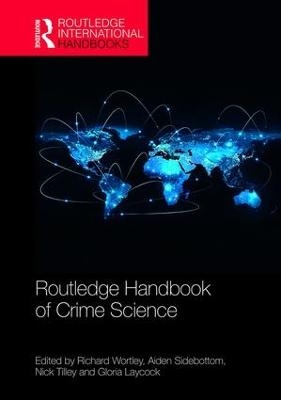
Routledge Handbook of Crime Science
Routledge (Verlag)
978-0-415-82626-6 (ISBN)
Crime science is precisely what it says it is: the application of science to the phenomenon of crime. This handbook, intended as a crime science manifesto, showcases the scope of the crime science field and provides the reader with an understanding of the assumptions, aspirations and methods of crime science, as well as the variety of topics that fall within its purview. Crime science provides a distinctive approach to understanding and dealing with crime: one that is outcome-oriented, evidence-based and that crosses boundaries between disciplines. The central mission of crime science is to find new ways to cut crime and increase security.
Beginning by setting out the case for crime science, the editors examine the roots of crime science in environmental criminology and describe its key features. The book is then divided into two sections. The first section comprises chapters by disciplinary specialists about the contributions their sciences can make or have already made to crime science.
Chapter 12 of this book is freely available as a downloadable Open Access PDF at http://www.taylorfrancis.com under a Creative Commons Attribution-Non Commercial-No Derivatives (CC-BY-NC-ND) 4.0 license.
Richard Wortley is Director of the Jill Dando Institute and Head of the Department of Security and Crime Science at University College London. Aiden Sidebottom is Associate Professor at the Jill Dando Institute of Security and Crime Science at University College London. Nick Tilley is Principal Research Associate and Professor at the Jill Dando Institute of Security and Crime Science at University College London. Gloria Laycock is Jill Dando Professor of Crime Science at the Jill Dando Institute of Security and Crime Science at University College London.
1 What is crime science? SECTION 1 Disciplinary contributions to crime science 2 Evolutionary psychology 3 Genetics 4 Sociology 5 Psychology 6 Economics 7 Epidemiology 8 Mathematics 9 Geography 10 Architecture 11 Engineering 12 Computer science 13 Forensic science SECTION 2 Crime science in action 14 Social network analysis 15 Analysis and prevention of organised crime 16 Terrorists are just another type of criminal 17 Evolution, crime science and terrorism: the case of Provisional IRA weaponry 18 Fighting cybercrime once it switches from the online world to the real world 19 The limits of anonymity in Bitcoin 20 Crime in the age of the Internet of Things 21 Transdisciplinary research in virtual space: can online warning messages reduce engagement with child exploitation material? 22 Those who do big bad things still do little bad things: re-stating the case for self-selection policing 23 Agent-based decision-support systems for crime scientists 24 Economic efficiency and the detection of crime: a case study of Hong Kong policing 25 No need for X-ray specs: through-the-wall radar for operational policing 26 Electronic noses: the chemistry of smell and security 27 Understanding forensic trace evidence 28 Interpretation of forensic science evidence at every step of the forensic science process: decision-making under uncertainty 29 Better preparation for the future – don’t leave it to chance 30 Future crime 31 Future directions for crime science
| Reihe/Serie | Routledge International Handbooks |
|---|---|
| Zusatzinfo | 32 Tables, black and white; 63 Line drawings, black and white; 8 Halftones, black and white; 71 Illustrations, black and white |
| Verlagsort | London |
| Sprache | englisch |
| Maße | 174 x 246 mm |
| Gewicht | 1070 g |
| Themenwelt | Recht / Steuern ► EU / Internationales Recht |
| Recht / Steuern ► Strafrecht ► Kriminologie | |
| Sozialwissenschaften ► Soziologie | |
| Wirtschaft ► Volkswirtschaftslehre ► Finanzwissenschaft | |
| ISBN-10 | 0-415-82626-8 / 0415826268 |
| ISBN-13 | 978-0-415-82626-6 / 9780415826266 |
| Zustand | Neuware |
| Haben Sie eine Frage zum Produkt? |
aus dem Bereich


